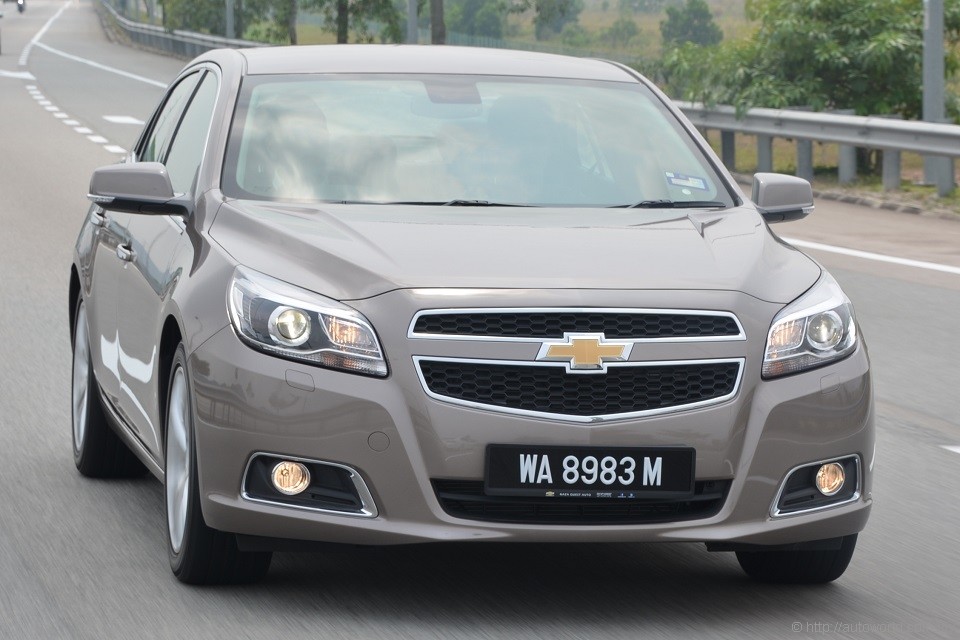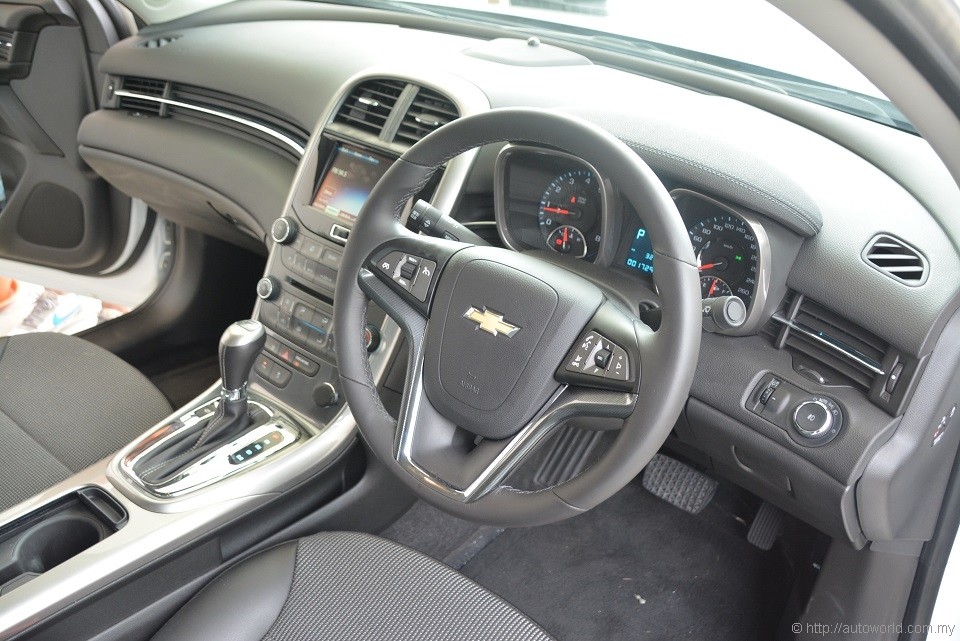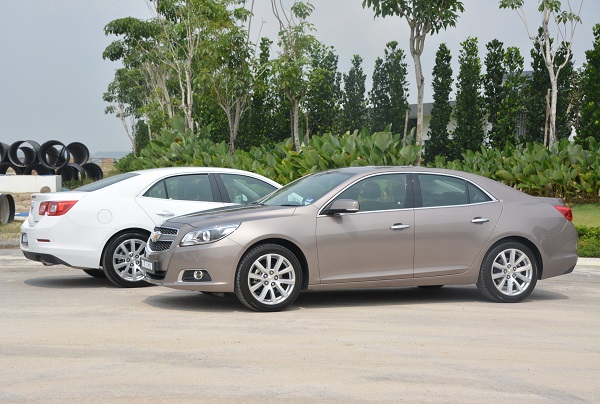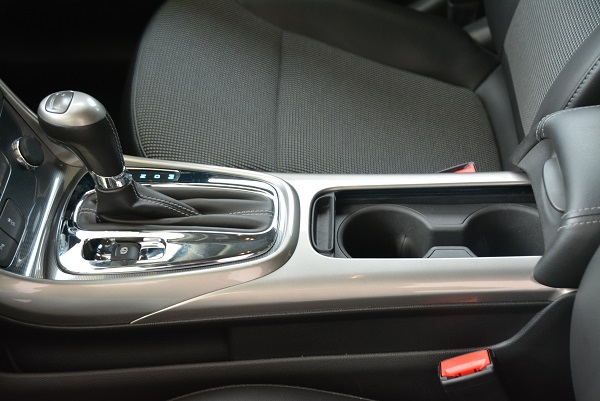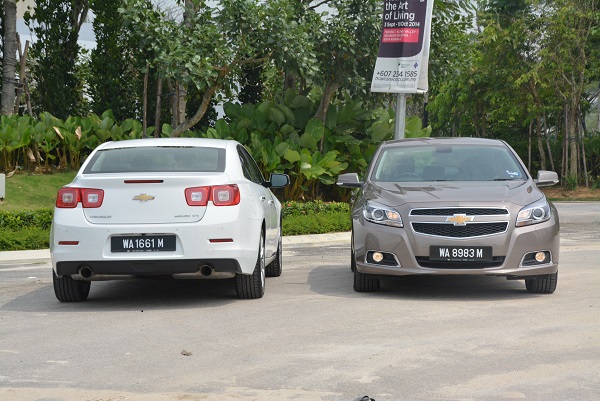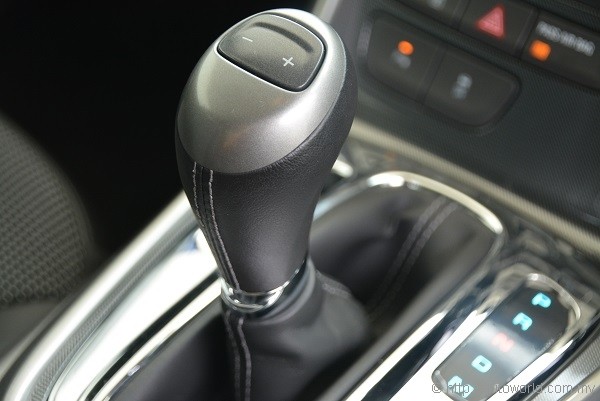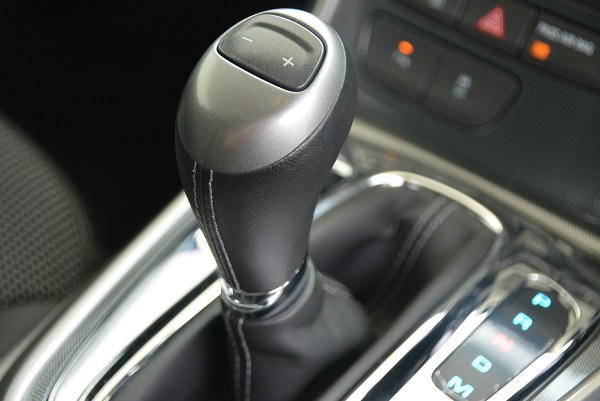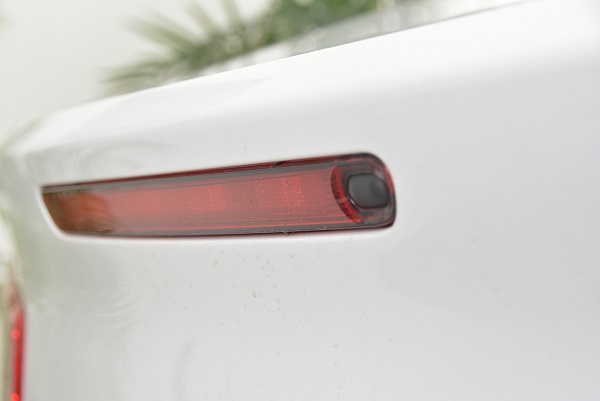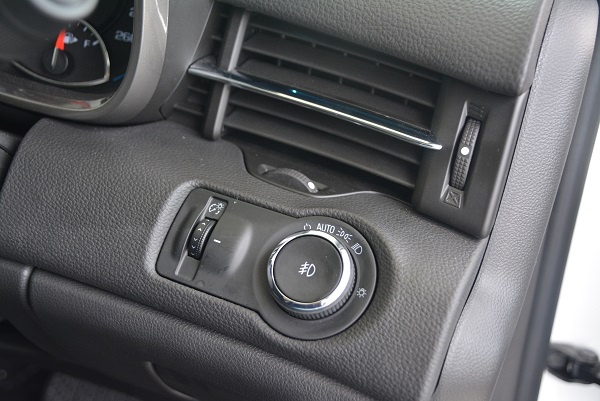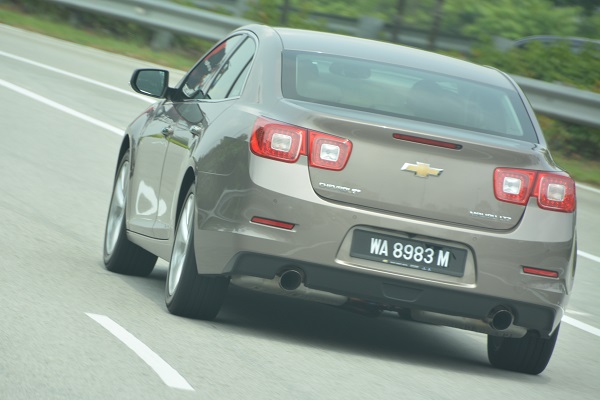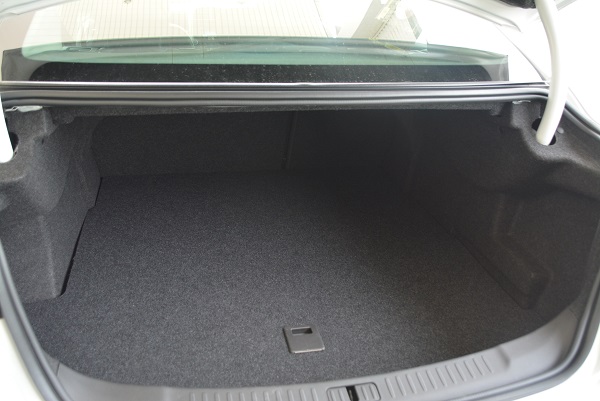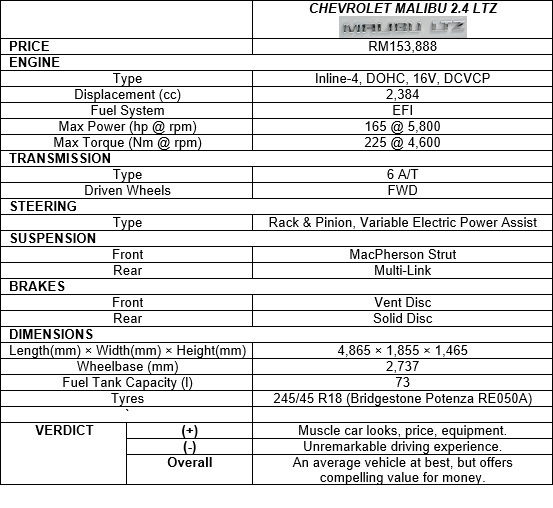Chevrolet Malibu Test Drive Review
Bulk of the D-segment volume these days are typically focused at the RM150k mark, where most brands offer you their mid-spec 2.0-litre models. Chevrolet asks that you stretch your budget just a little to RM153,888 before on-road costs and have this 2.4-litre Malibu on your driveway instead.
In its sole LTZ specification as tested here, the Malibu certainly does not skim on equipment, being equipped with keyless entry, start/stop button, reverse camera, four airbags, HID headlights, and electronic stability control. A central touchscreen is provided, albeit one without GPS navigation, but with USB and Bluetooth connectivity.
 |
| No complains on the looks department. The Malibu is a handsomely styled vehicle. |
Mechanical basis of the Malibu is supplied by the second iteration of GM’s global Epsilon platform that also underpins a number of D-segment models amongst the company’s various brands. In line with segment expectations, chassis is independently sprung all-round with disc brakes provided at all corners; steering assist is electric.
Under the hood, GM’s 2.4-litre four-cylinder Ecotec engine channels outputs of 165hp @ 5,800rpm and 225Nm @ 4,600rpm to the front wheels via a 6-speed automatic transmission. These figures are by no means class-leading, although they are hardly shamed by rivals. Amongst comparably-sized engines, only the Mazda6 2.5 SkyActiv-G has a clear lead over the Malibu with 185hp and 250Nm on tap; it is worth noting, however, that the Hyundai i40’s 2.0-litre GDI engine offers 175hp and 213Nm.
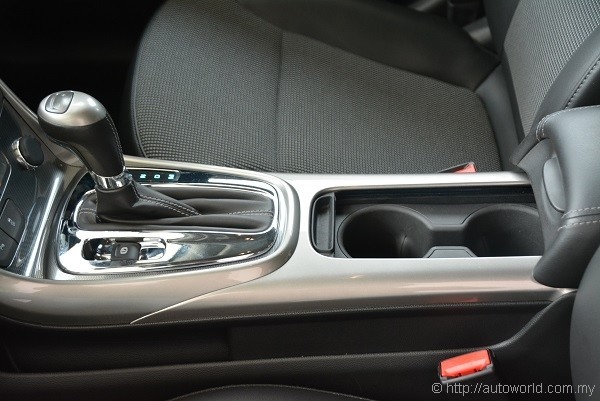 |
| Dual joined cupholders. Notice the small slip pockets at the side of the centre console. |
Exterior
The Malibu nameplate traces its origins to the now defunct Chevrolet Chevelle family, and its styling consciously seeks to evoke memories of its muscle car heritage. Its quad tail light cluster is a not-so-subtle hint of the popular Camaro, a reference emphasized by its bulging rear fenders and distinctively sharp kink of its glass area at the base of its C-pillar.
The front end, however, contrasts with a look that is more rounded and generic. There is the gaping split grille bisected by the bow tie logo at the middle as seen on the Cruze, but overall the fascia lacks the distinctive menace to match the muscular-looking tail.
Dimensionally, the Malibu’s length and width (4,865mm x 1,855mm) correspond closely with its segment peers, but its 2,737mm wheelbase is substantially shorter than the 2,775mm magic number measurement shared across the Honda Accord, Toyota Camry, and Nissan Teana. Proportion-wise, this once again reminds us of the short-wheelbase long-overhang arrangement common among old school American cars, even if the Malibu’s FF mechanical layout is anything but common with them.
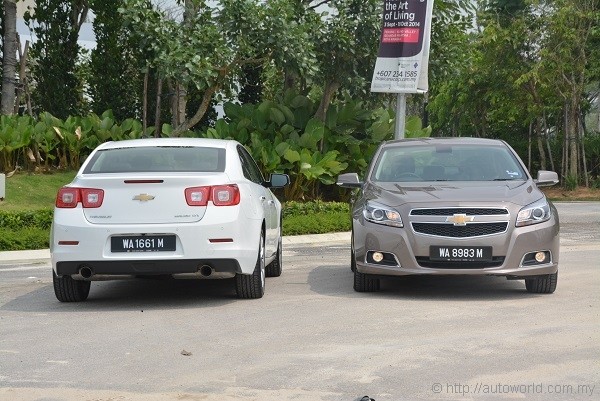 |
Interior
On the backdrop of Chevrolet’s familiar ‘dual cockpit’ theme, the Malibu’s cabin presents itself as one that is solidly built and, save for a couple of very glaring errors, generally of sound ergonomics. It scores favourably in perceived quality – materials selected feel on par with class standard and do not betray any sense of budget considerations; fit and finish appear solid and consistent.
For the driver, majority of the relevant control elements can be found within easy and intuitive reach. The two-binnacle instrument panel is well-organized and clear to read; the monochrome trip computer is out of date in appearance, but nevertheless functional. Ditto the rows of grey buttons on the centre stack – unremarkable to look at, but pleasingly easy to use upon familiarization. That each button is big and clearly labelled adds to the overall intuitiveness of the control scheme.
 |
| Multi-info display in monochrome format. |
Tactile feedback of the various control elements are generally pleasing and communicate an unmistakable impression of solidness. This is particularly true of the transmission selector lever, which plops into each of its well-spaced gates with satisfying crispness; too bad it is also the source of our biggest frustration in the cabin, which is the bizarrely-conceived top-mounted rocker switch to operate the transmission’s manual gear control. Compounding the problem is that the lever actually sits quite far back along the centre console in ‘M’ mode, putting the already unintuitive-to-operate button in an outright awkward-to-reach position. In a cabin with a commendable list of hits, that is an awfully bad miss.
Another inexplicable error in the cabin’s design is the absence of rear air-con blowers. At a time when such a facility can be found om even a Honda City, Chevy’s inability to offer this particular feature in its flagship model can only be described as a gross oversight; for some buyers, it may even be a costly deal-breaker.
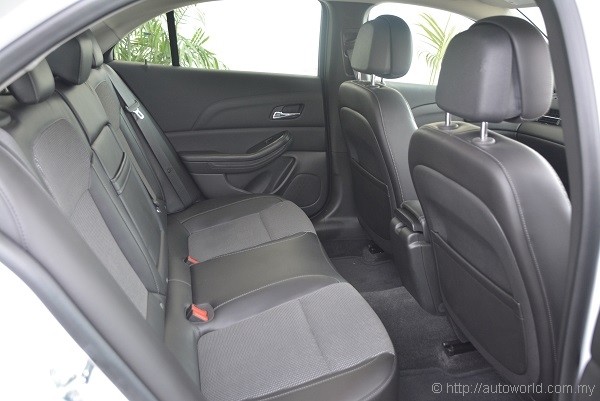 |
| No air-con vents for rear passengers – a very gross oversight. |
Driving Experience
Chevrolet’s communications make big claims of the Malibu’s ride and handling being tuned to European standards; our advice is that you do not take those claims too seriously. We will grant that the Malibu is a tidy handler around bends and largely stable at high speeds, but it is at best little better than the segment’s average and ultimately lacking the finesse and polish to truly challenge the segment’s best. Ride quality is nevertheless deserving of praise; it is amazingly compliant given that it sits on 45-series 18-inch tyres.
Straight line performance is similarly unremarkable; Chevrolet’s intention might be to pitch the Malibu as a value-driven 2.4-litre model at the price of a 2.0-litre, but the reality is that we felt little, if any, performance advantage over an Accord 2.0 VTi-L or Teana 2.0 XL. The engine’s power delivery feels distinctly old school in that it needs revs to build a head of steam; that on its own is fine, but the slow-shifting auto gearbox does little to facilitate any semblance of urgent progress.
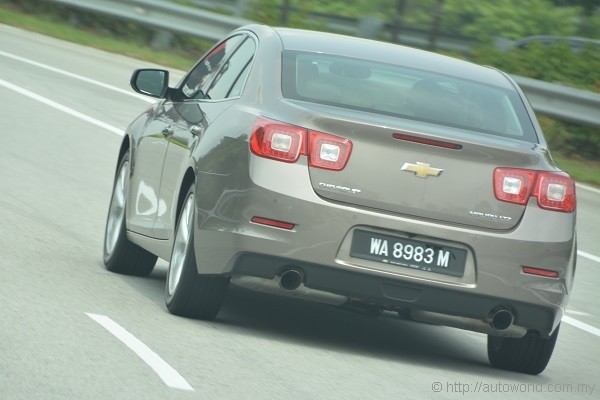 |
Verdict
If the Malibu’s muscular appearance leads you to think it is in anyway a sparkle to drive, allow us to dispel that notion for you right here – it isn’t. It’s not outright bad, however, and it still makes for a highly convincing purchase once its other virtues are brought into focus.
Aesthetics for starters, go a long way in strengthening the Malibu’s case – its exterior is handsomely styled and its interior is by-and-large thoughtfully designed and solidly built, creating a highly pleasant environment. In more tangible arguments, such as price versus specification, the Malibu’s case becomes difficult to ignore – its value-for-money preposition is quite possibly unmatched in the segment.
 |




